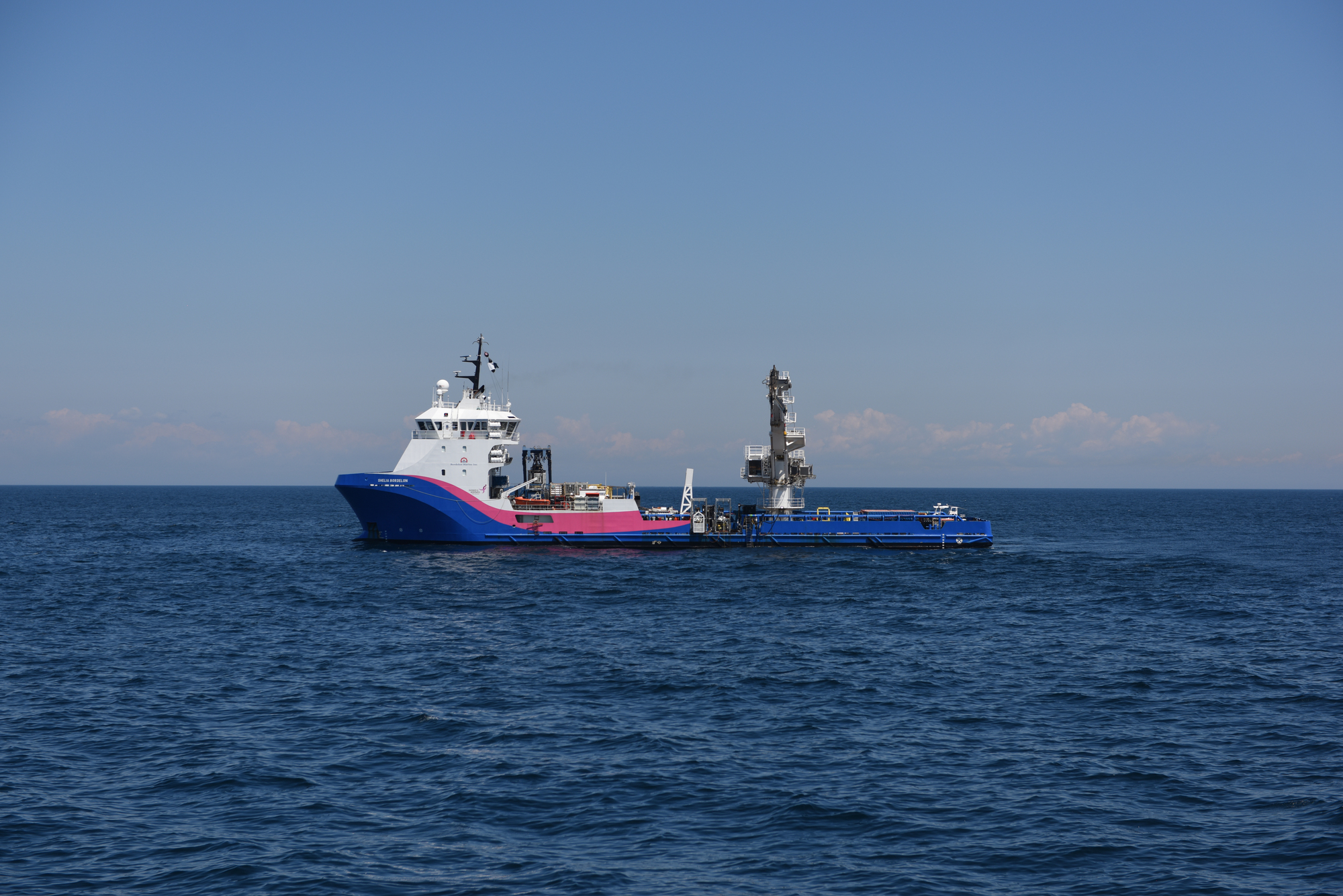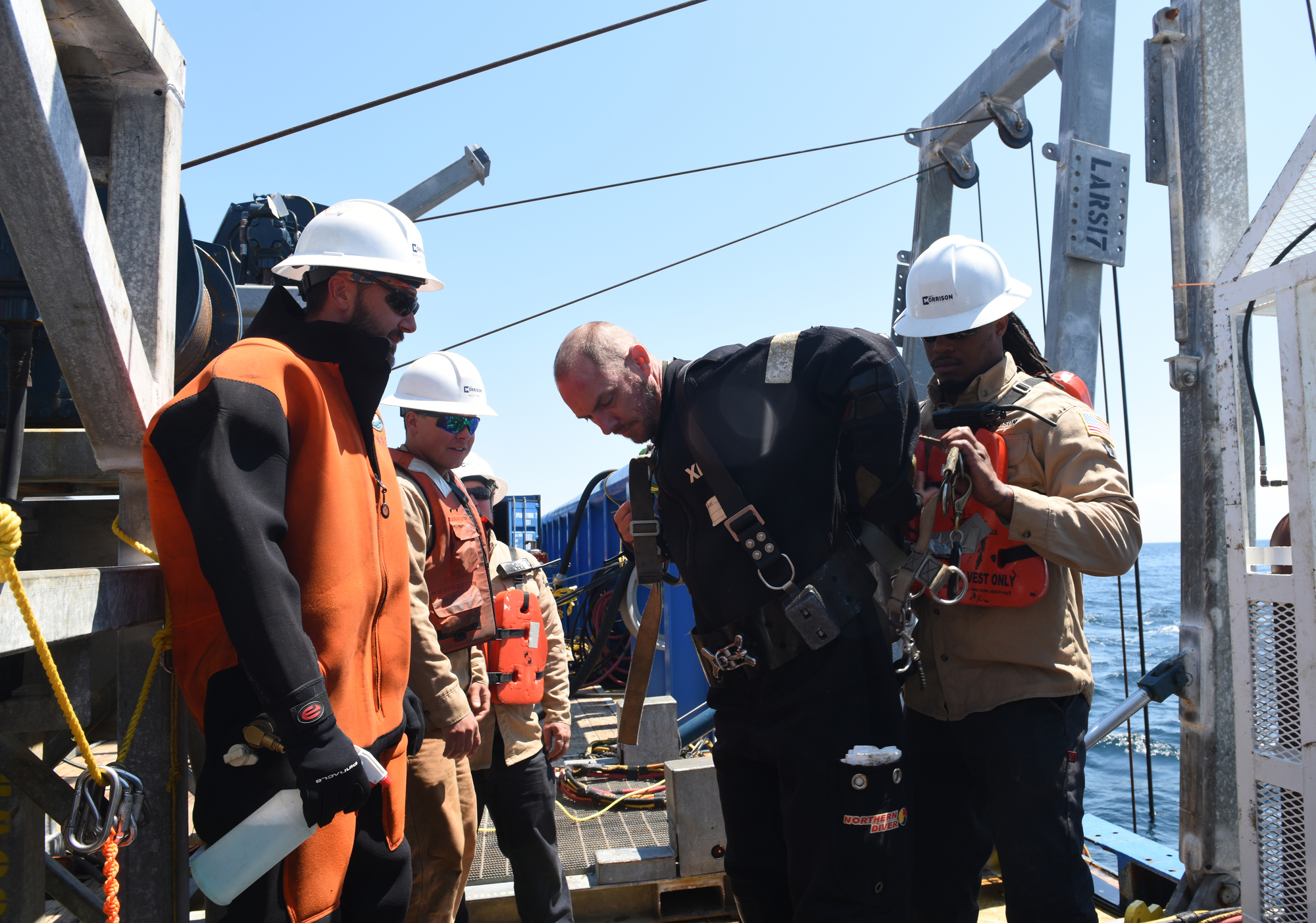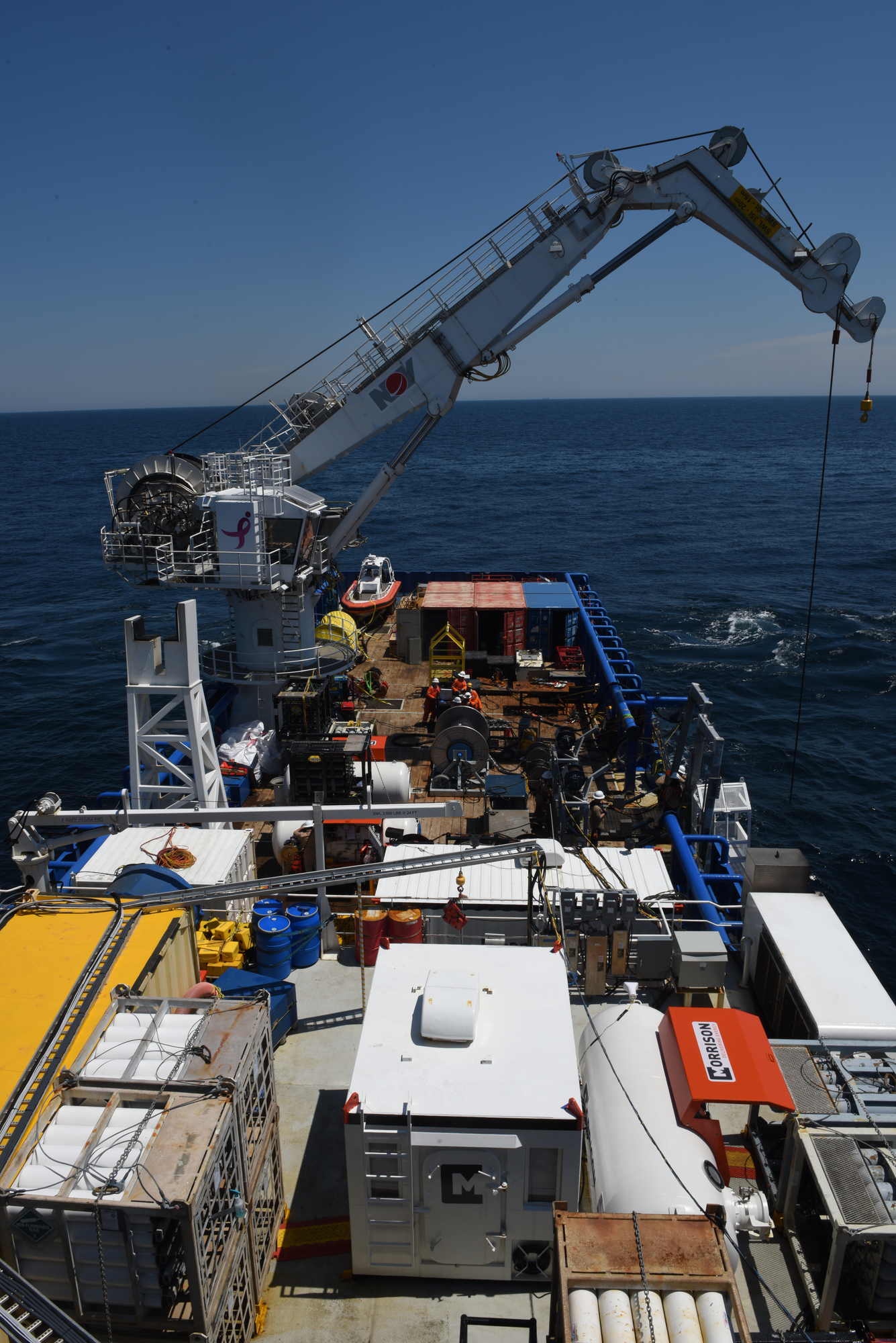Diving down to history to protect the present
U.S. Coast Guard sent this bulletin at 05/17/2019 05:00 PM EDT
| Feature Story |
U.S. Coast Guard 1st District PA Detachment New York |
Diving down to history to protect the present
Story by Chief Warrant Officer Allyson E.T. Conroy
 |
 |
 |
 |
 |
 |
Editors' Note: Click on images to download high resolution version.
After days of stormy seas and gray skies, the mid-May sun warms the deck where Resolve Marine Group's team works aboard the ship Shelia Bordelon. Team members move from one job to the next as the ship buzzes with energy. The Coimbra Unified Command has been on scene above the wreck of the tanker Coimbra since April 29, and they continue their work responding to the oil on board the wreck of the tanker Coimbra 30 miles off the coast of Shinnecock, NY.
Initial dive operations at the beginning of May 2019 showed the tanker was leaking small amounts of oil from its ocean grave 180 feet below the surface. The Coimbra was a British-flagged tanker that left New York in January 1942 carrying more than two million gallons of oil as well as munitions for onboard weapons when a German U-boat torpedoed the tanker. Thirty crewmembers and six gunners were lost that day.
In 2015, the Coast Guard began receiving pollution reports from the National Environmental Satellite Data and Information Service via NOAA of abnormalities that appeared to be an oil sheen. Responders from Coast Guard Sector Long Island Sound were able to determine these reports correlated with the site of the Coimbra wreck. Due to these reports, Capt. Kevin Reed, commanding officer Sector Long Island Sound, determined that Coimbra poses a substantial threat to the environment and opened the Oil Spill Liability Trust Fund to complete an assessment of the vessel.
“Resolve Marine is honored to assist the U.S. Coast Guard and the New York State Department of Environmental Conservation in its efforts to assess and mitigate pollution threats the World War II Tanker Coimbra potentially poses,” said Resolve Marine Group project manager Aaron Joszef.
As part of the operation, deep-water divers perform hours-long dives on the wreck site conducting what is known as “hot tapping” in order to determine the best means of accessing the oil tanks to determine the amount of oil still on board the tanker. Oil samples extracted during these dives will be tested and analyzed in an effort to identity the type of oil the team is working with, as well as the best means to remove oil products still in the tanks.
Once aboard the Shelia Bordelon, at first glance it looks like a small industrial city has been constructed on the deck of a 256-foot ship containing all of the supplies needed for this operation. Toward the stern, large container boxes house supplies for drilling, sampling, and diving. A remotely operated vehicle (ROV), which is the size of a small car, is housed on the starboard side of the ship when not in use. The dive cage that lowers the divers into the water is set up on the port side, and two cylindrical, hyperbaric chambers are placed toward the center of the work deck. Nearby, a small shack for the dive supervisors allows constant communication from the surface to those working on the ocean floor. As one walks along the deck, the initial look of congestion immediately becomes more organized in the mind’s eye as samples are labeled for testing, a safety officer monitors a diver’s safe decompression, and each person has his own job to perform.
“There are a lot of moving parts to this one operation in order to safely remove the oil product in the tanks that far below the surface,” said Cmdr. Keith Donohue, the on-scene federal incident commander. “Each person aboard the Shelia Bordelon has a very specific role to play in these daily movements, whether it is a diver working on the wreck itself, to the dive supervisors keeping a close eye on his particular diver, to the those working with the salvaged piece of hull so that we can determine the best way to drill into the tanks, extract the oil and have as minimal impact on the maritime environment as possible.”
Each day that the seas are calm and weather permits, dive operations begin with the rise of the sun and continue until the soft, orange light of twilight. Divers are assisted into their dive suit – each assistant responsible for a specific piece of equipment. Once dressed out, the diver steps onto the dive cage and is lowered into the water. Once he is 170 feet down, he jumps off of the cage into the cold, dark environment of the deep ocean, moving himself ten feet further toward the Coimbra wreck site.
On the opposite side of the ship, once the diver is in the water, crane operators move the ROV to the side of the ship, and then lower it into the water. Dive supervisors constantly monitor both the diver and the ROV as the team work side-by-side on the Coimbra. The supervisors on the surface dictate directions to the divers 180 feel below in the 50-degree water. Everything from what direction to move, what step to take, and what tool to retrieve from the tool basket, the dive supervisors maintain constant communication with the divers.
Once his task list is complete and time is up, the diver puts all of his tools back in the basket and begins the slow return to the surface.
“The divers use a heliox gas mix – a mix of helium and oxygen – which is why the time it takes to decompress from each dive is extremely important,” said U.S. Coast Guard Lt. Cmdr. Jesse Diaz, of Sector Long Island Sound. “Once the diver is on deck, we have about four minutes to get him out of the dive suit and into to the hyperbaric chamber, where he’ll continue to safely decompress for another two hours.”
Diaz has worked on the Coimbra response since 2016 when the Coast Guard Sector Long Island Sound began to receive timely satellite imagery showing anomalies in the area.
“This has been one the most challenging and the most rewarding operations in all of my career,” Diaz said. “There are 50 people living aboard the Shelia Bordelon with one mission to achieve. We work through tasks both planned and those that come up unexpectedly. This type of work poses challenging situations, and together we make decisions how to move forward. We couldn’t do that without the trust earned throughout the team, and the trust from our leadership to do the job we are tasked to complete.”
Operations are scheduled to continue over the next few weeks to safely extract the oil from the 77-year-old wreck. More than 62,000 gallons of oil has been removed from the tanks of the Coimbra wreck since pumping operations began May 11. The team of the Unified Command is prepared to stay on scene until all of the recoverable oil is removed from the Coimbra and the tanker no longer poses a threat to the maritime environment it has now become a part of.
-USCG-

